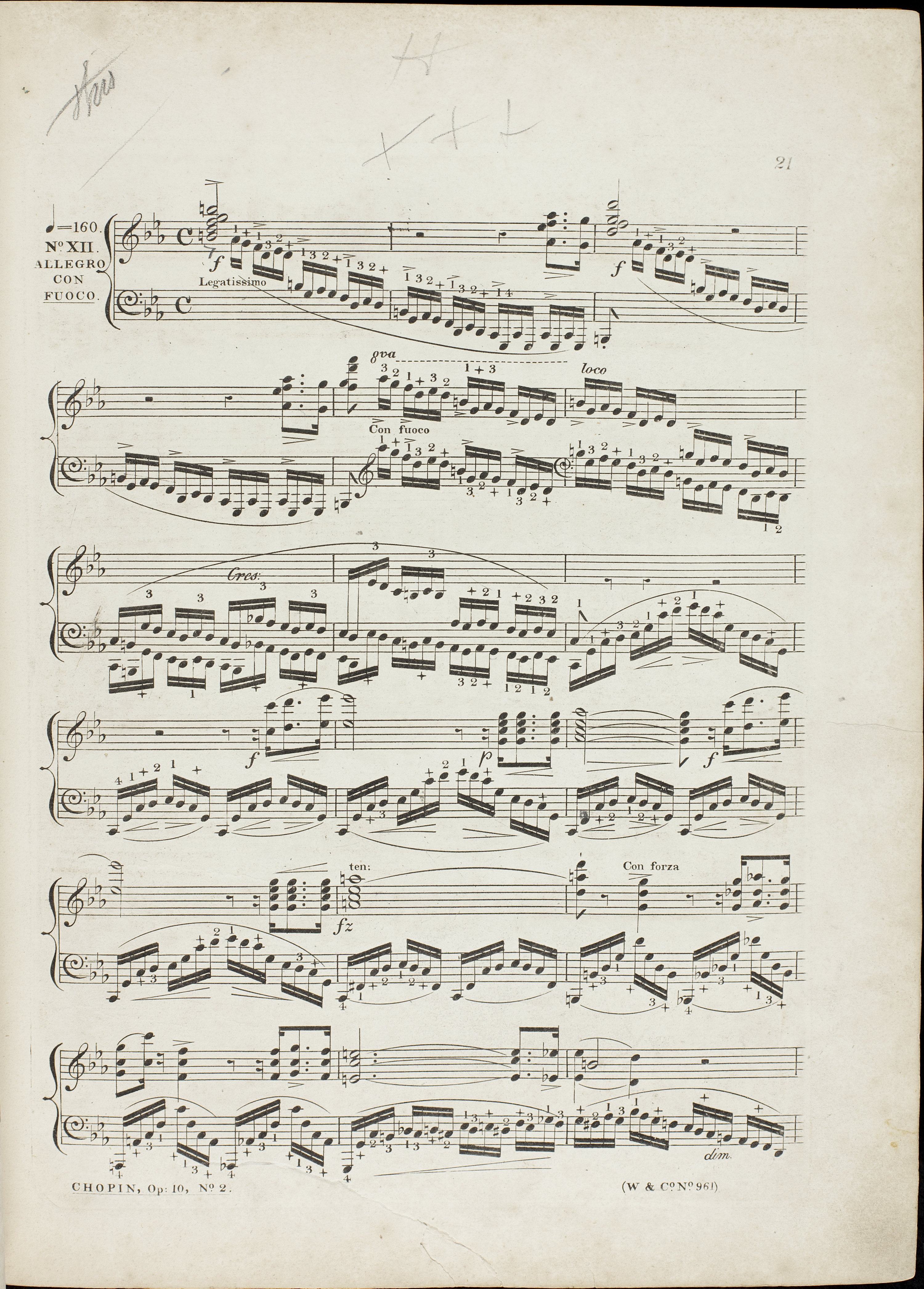Op. 2, Variations in B♭ major
Op. 10, 12 Etudes
Op. 11, Concerto in E minor
Op. 21, Concerto in F minor
Op. 22, Polonaise in E♭ major
Op. 24, 4 Mazurkas
Op. 25, 12 Etudes
Op. 26, 2 Polonaises
Op. 27, 2 Nocturnes
Op. 28, 24 Preludes
Op. 30, 4 Mazurkas
Op. 35, Sonata in B♭ minor
Op. 50, 3 Mazurkas
Op. 63, 3 Mazurkas
Op. 64, 3 Waltzes
(Op. 4), Sonata in C minor




Op. 10 No 12, Etude in C minor
The articulation detail written in A could have been overlooked in FE. In spite of this, we prefer the notation of the editions, as in analogous situation in bar 57 Chopin already did not mark the separation of the bass note. The fingering also does not suggest an interruption of the passage's continuity.
Compare the passage in the sources »
category imprint: Differences between sources
issues: Inaccuracies in FE
notation: Articulation, Accents, Hairpins



